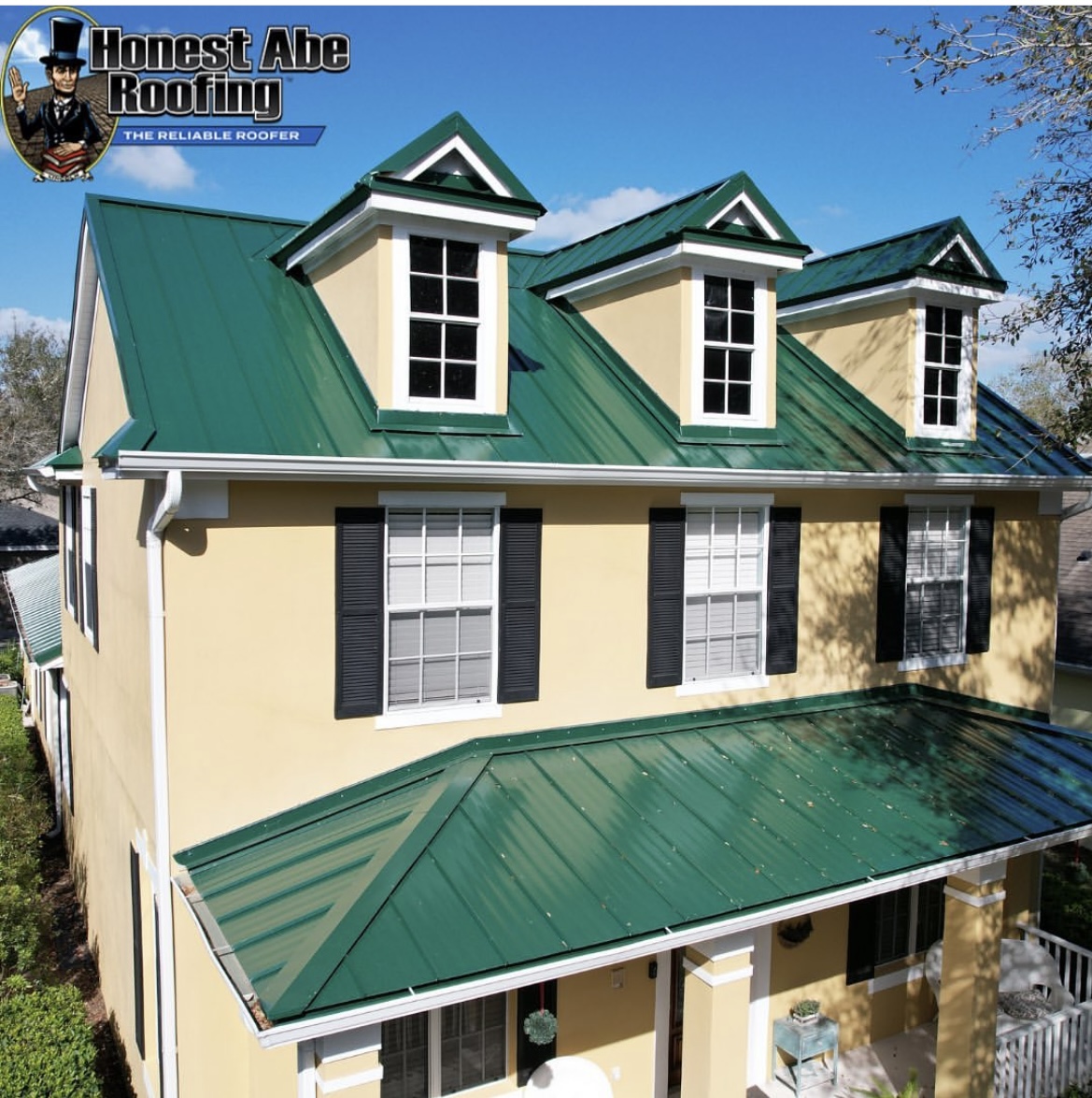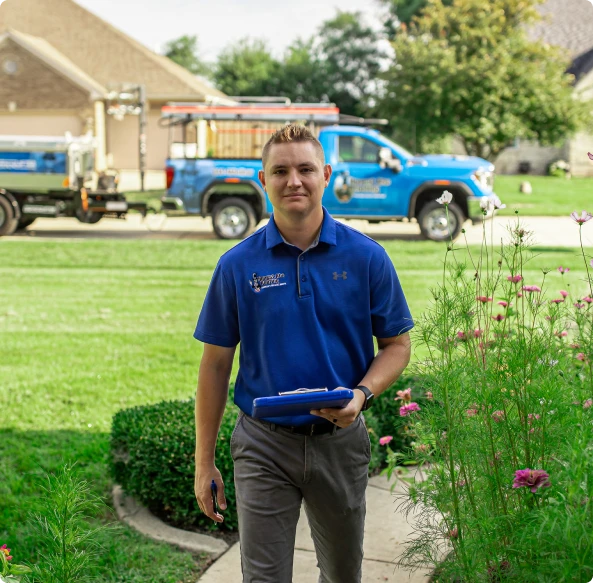What Type of Roof Holds Up Best in a Hurricane?
What Type of Roof Holds Up Best in a Hurricane?

Introduction
In hurricane-prone regions like Florida, selecting the right type of roof can make a world of difference. Each hurricane season brings a reminder of nature’s power, as homes and buildings face punishing winds, relentless rains, and flying debris. This is especially true for roofs, which are often a home’s first line of defense. To protect your home and family, it’s essential to invest in a roof that can endure these intense conditions.
When it comes to roofing, not all materials are created equal. Some roofs hold up remarkably well during storms, while others may need frequent repairs or replacement. In this blog, we’ll explore the types of roofing materials best suited to withstand hurricanes, focusing on metal roofing as the gold standard. But we’ll also consider other strong contenders, such as Brava Tile and F-Wave Roofing, to help you make an informed choice that aligns with your home’s needs.
Understanding Hurricane Forces
Hurricanes bring a destructive mix of wind, rain, and flying debris that relentlessly tests the durability of roofs. Wind is often the most damaging force, with speeds in powerful storms reaching over 150 miles per hour. High winds can rip shingles off, lift entire sections of a roof, or even expose the home’s structure if the roof fails entirely.
Hurricanes also dump massive amounts of rain, adding extra stress on roofs as water finds every possible weak point. Even a minor flaw can lead to leaks, which, if left unaddressed, can cause interior water damage, mold, and structural issues. Lastly, debris becomes a high-speed projectile in hurricane winds. Roofs must be tough enough to withstand impact from branches, stones, and even smaller items carried by the wind.
Types of Roofing Materials
Metal Roofing
When it comes to hurricane resistance, metal roofing is the champion. Its durability and wind resistance make it ideal for standing up to extreme weather, especially hurricanes. Metal roofs can resist winds up to 160 mph, which is often strong enough to withstand most hurricanes. Unlike many other materials, metal roofing is also lightweight, which minimizes the stress on your home’s structure.
Aside from being tough, metal roofs offer additional perks. They last a remarkably long time, often outlasting other types of roofing materials by decades. With minimal maintenance, they stay strong season after season, requiring only occasional inspections. For homeowners in hurricane-prone areas, metal roofing is an investment that pays off in durability, reliability, and peace of mind.
Tile Roofing
Tile roofing, particularly clay and concrete tiles, is another strong option for hurricane resistance. Tiles are heavy, which gives them natural stability and makes them less likely to be lifted by high winds. Properly installed tile roofs can also resist winds up to 150 mph, and they are highly resistant to rot, insects, and fire.
However, tile roofs are not without their challenges. While they perform well against high winds, they are more vulnerable to impact damage. Debris carried by hurricane winds can crack or break individual tiles, which may require repairs. Additionally, tile roofing is often more complex to install, so it’s crucial to hire a skilled roofing contractor to ensure that it’s done right.
Asphalt Shingles
Asphalt shingles are the most common roofing material in the U.S., but not all asphalt shingles perform equally well in hurricanes. Traditional three-tab shingles are often weaker and may only resist winds up to 60-70 mph. However, architectural shingles are a more durable choice, with higher wind resistance and a longer lifespan.
While architectural shingles perform better, they still may not match the hurricane resilience of metal or tile. For homes in hurricane-prone areas, it’s worth considering a synthetic option or an upgraded asphalt shingle specifically designed for extreme weather. While asphalt shingles are cost-effective, they might require more frequent replacements after significant storms.
Synthetic Roofing Materials
Synthetic roofing products like polymer-modified shingles offer a modern solution to storm resistance. These materials are engineered to withstand harsh weather, combining durability with flexibility to absorb impact. One leading synthetic option is F-Wave Roofing, known for its superior resilience and wind rating. Synthetic shingles often mimic the look of traditional materials but bring added benefits, like improved durability and easier installation.
For those who want the best of both worlds—aesthetic appeal and strength—synthetic roofing materials offer a strong alternative. With options like F-Wave, homeowners can achieve a high level of storm protection without sacrificing style. For more information, visit the F-Wave website.
Roof Design Considerations
Roofing material alone doesn’t determine hurricane resilience; roof design is equally important. Roof pitch and shape play a crucial role in how well a roof withstands hurricane forces. For example, a hip roof, which slopes on all sides, is known to perform better in high winds compared to a gable roof, which has two sloped sides and two vertical walls. Hip roofs create less wind resistance and are less likely to be lifted off the home.
A steeper pitch can also help redirect wind upward rather than against the roof, reducing the risk of uplift. When choosing a roof, it’s wise to consider how the shape and pitch can work to your advantage during a hurricane. The right design can significantly improve your home’s storm resilience and reduce potential damage.
Installation Quality
Even the best roofing materials and design won’t make a difference if the installation isn’t up to par. Proper installation is critical for ensuring that your roof can handle hurricane conditions. Experienced roofers know how to secure materials, apply correct sealing techniques, and install additional fasteners to prevent wind uplift. Choosing a skilled roofing contractor means fewer chances of roofing failure when a storm hits.
Common installation mistakes, like improperly fastened shingles or poorly installed flashing, can create weak points where wind or rain can penetrate. Working with an experienced, reputable roofing company is the best way to avoid these issues and ensure that your roof is ready to face the next hurricane season head-on.
Maintenance Tips
A durable roof needs consistent maintenance to remain hurricane-ready. Scheduling regular roof inspections, especially before hurricane season, can help identify any weak spots. If any issues are found, such as loose shingles, cracks, or minor leaks, it’s essential to address them quickly to prevent small problems from turning into major damage during a storm.
Keep your roof clear of debris, as accumulated leaves or branches can trap moisture and cause wear over time. Clean gutters regularly to prevent water from backing up onto the roof. Proactive maintenance goes a long way in preserving the life of your roof and maximizing its hurricane resistance.
Case Studies: Successful Hurricane Resistance
Real-world examples underscore the importance of choosing a resilient roofing material. In recent hurricanes, homes with metal roofs have shown impressive resistance to damage, with many enduring storm winds with little to no visible impact. Similarly, homes with Brava Tile roofs, made of composite materials, have also withstood hurricane conditions effectively. These synthetic tiles mimic the look of traditional materials while offering enhanced durability and flexibility. Visit the Brava Tile website to learn more about their offerings.
F-Wave roofs have also performed exceptionally well, with synthetic shingles that remain intact even after major storms. These case studies highlight that choosing a quality roof with hurricane resistance can truly pay off when nature puts it to the test.
Conclusion
For homeowners in hurricane-prone areas like Florida, roofing is more than just aesthetics—it’s a matter of safety and protection. Metal roofing stands out as the most reliable option, offering unparalleled wind resistance, long life, and low maintenance requirements. However, tile roofing and synthetic materials like Brava Tile and F-Wave Roofing also provide excellent resilience against hurricanes, each with unique benefits and styles.
When choosing a roof, consider the forces it will face, the importance of quality installation, and the role of design in overall performance. A well-chosen roof can mean the difference between costly repairs and a secure home when the next hurricane arrives.
Roofing in Orlando, Florida
Don’t leave your home’s safety to chance. For reliable roofing solutions, contact Honest Abe Roofing Orlando at 407-750-7117 to schedule a free consultation and inspection. Our team specializes in roof replacement, roof repair, and roof installation, ensuring that your home is hurricane-ready with the best materials and skilled craftsmanship. Protect your investment and your peace of mind—reach out today to get started!
Roof replacement, Roofing, Roof Installation, Roofing companies near me, roofers near me, Orlando Roofing, Cost of roof replacement, Roof repair, Tile roof repair, roof financing, Roofers in Orlando, Roofers in Kissimmee, Roofers in St. Cloud, Roofers in Lake Nona.
